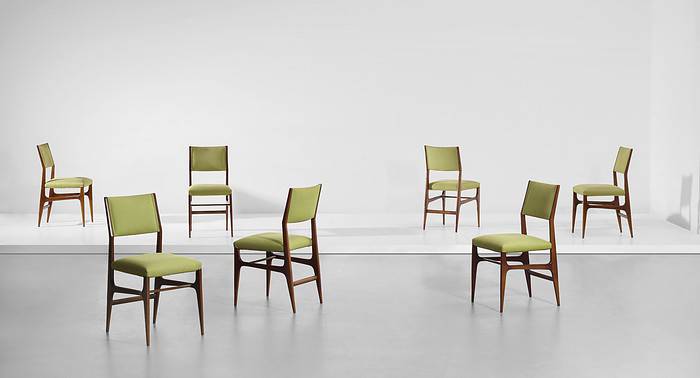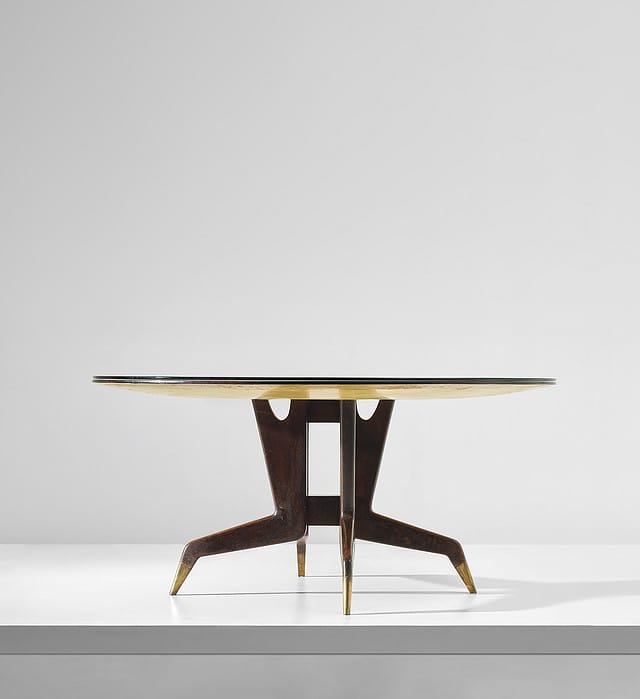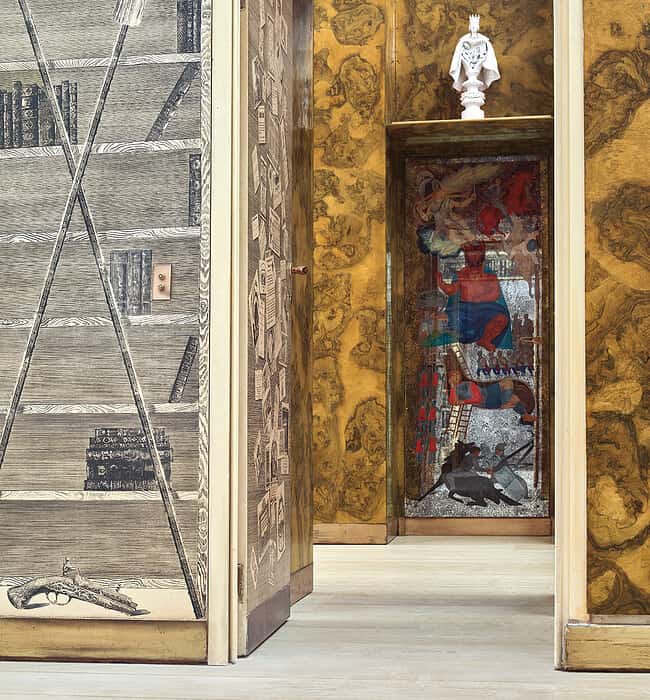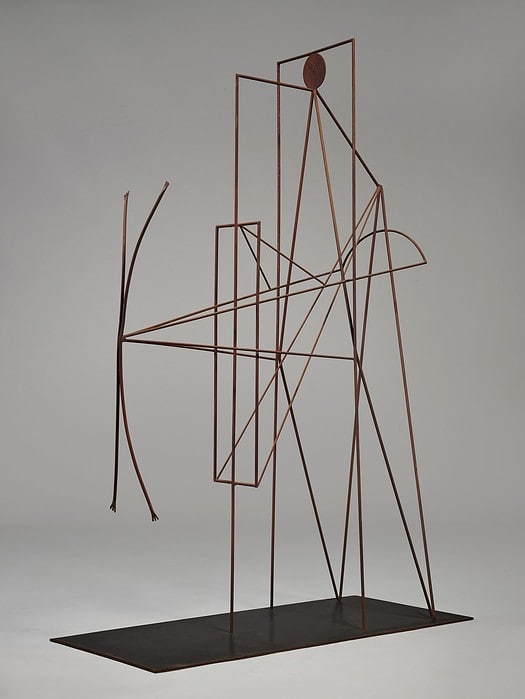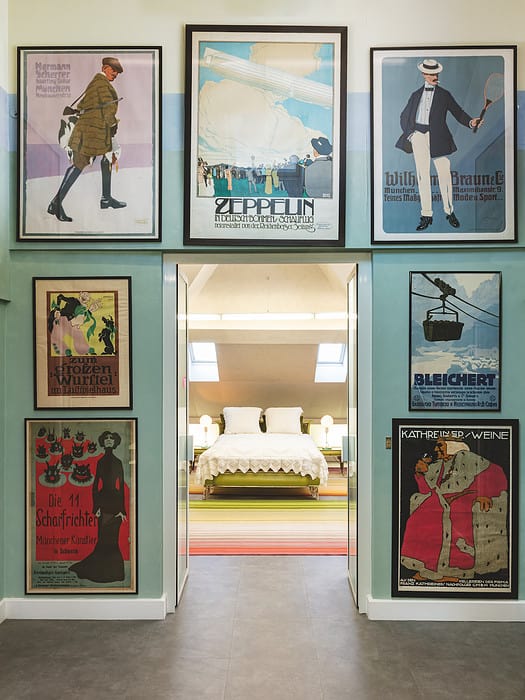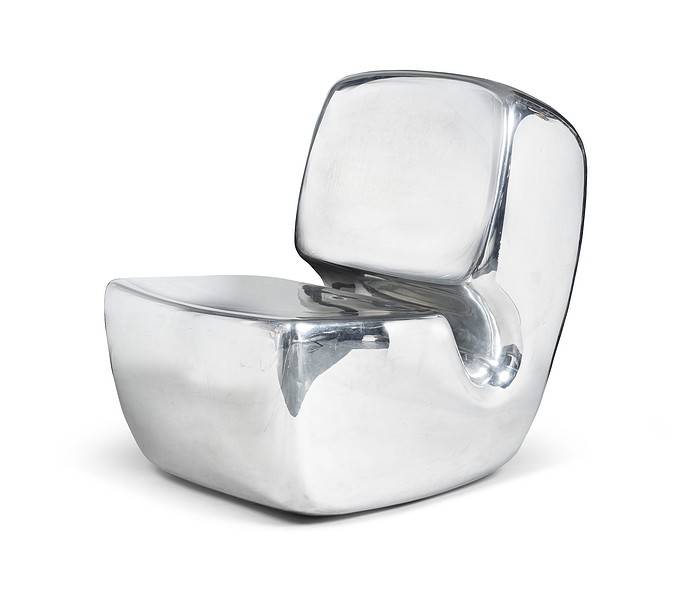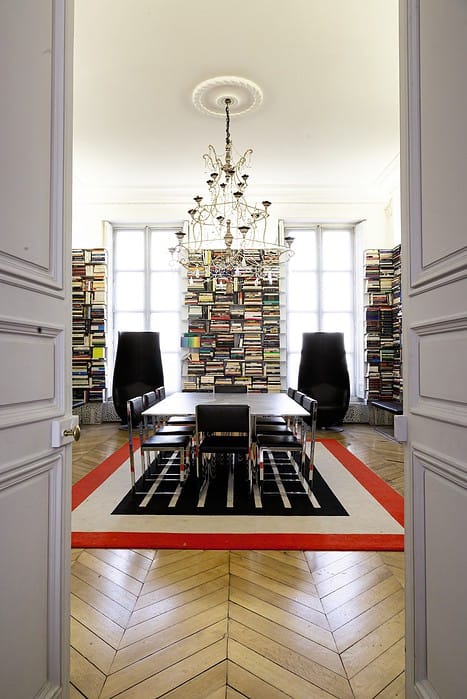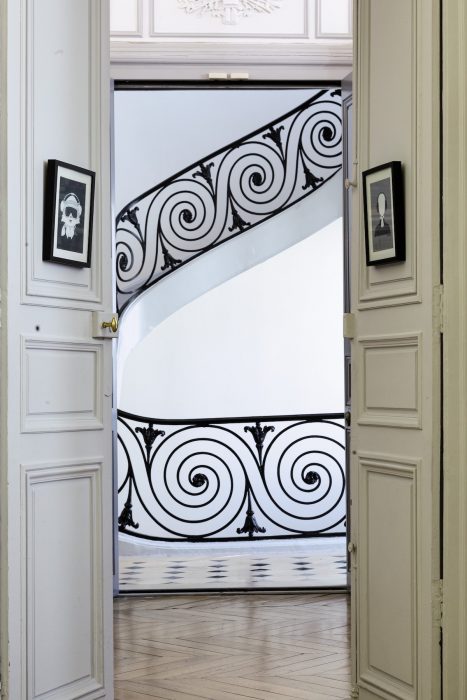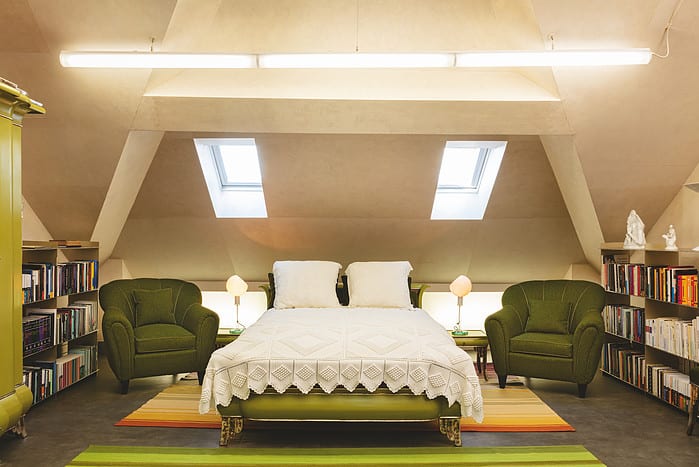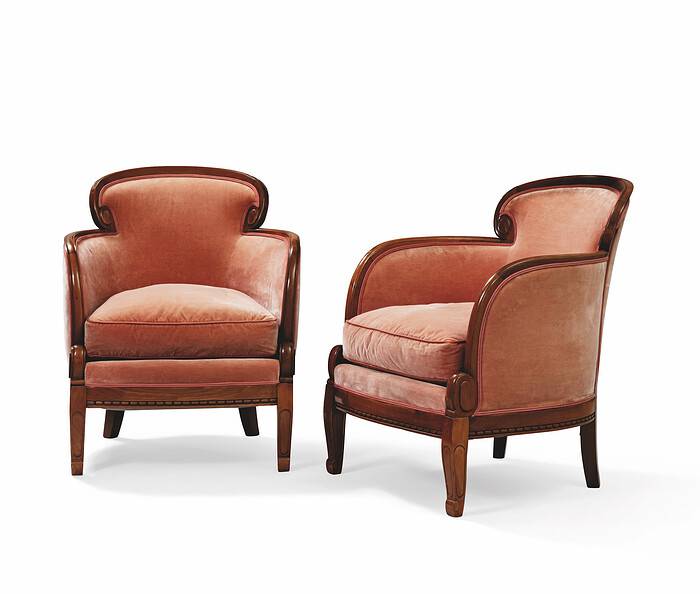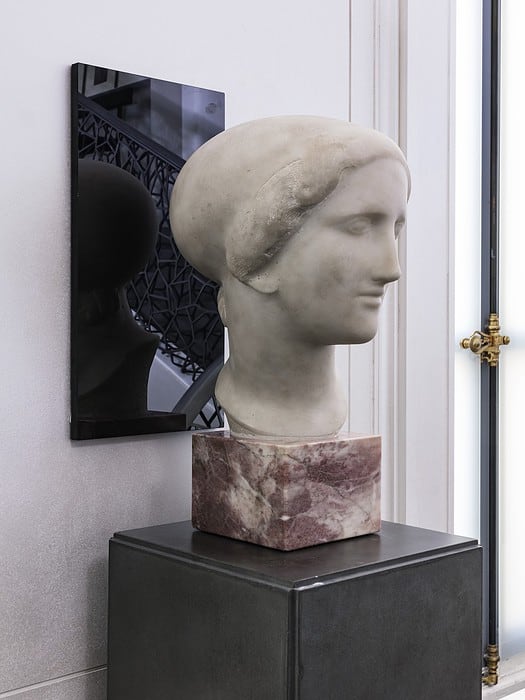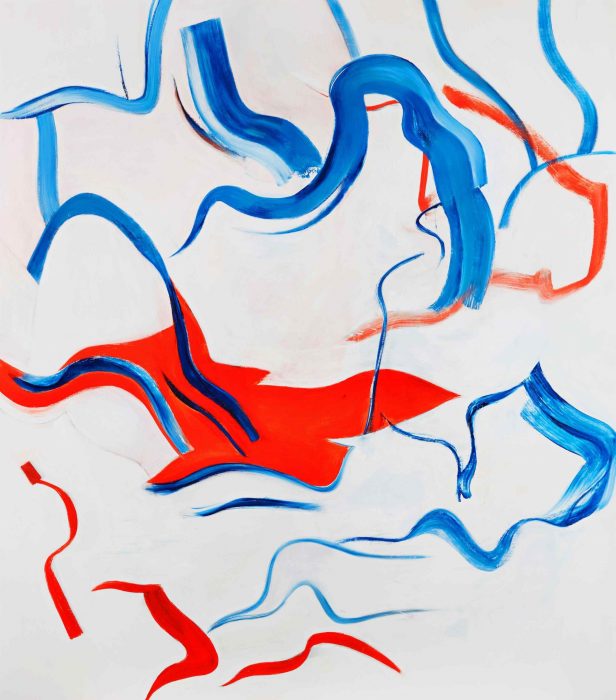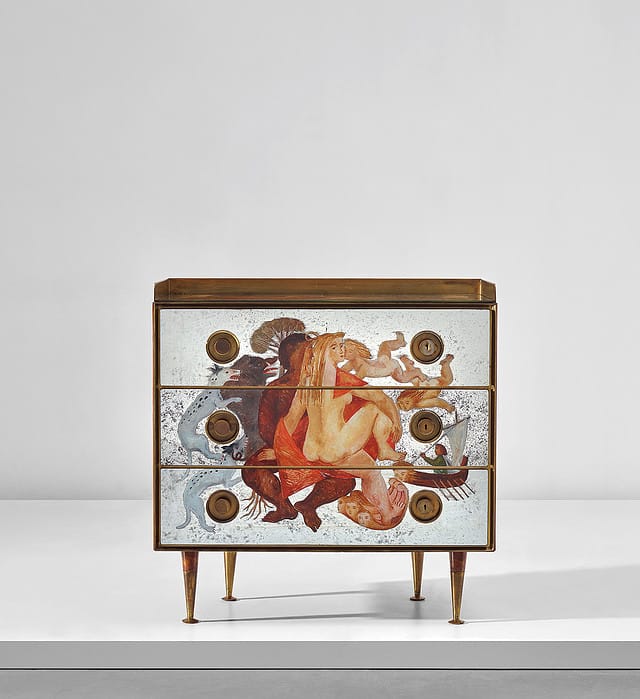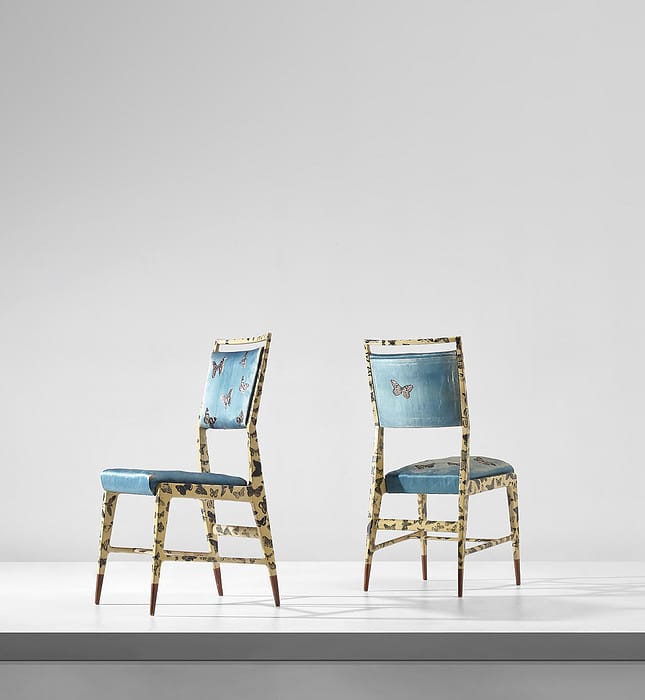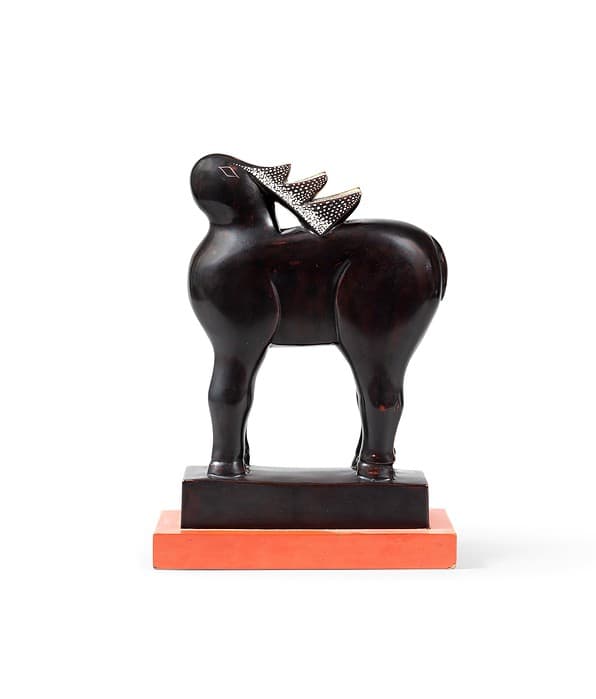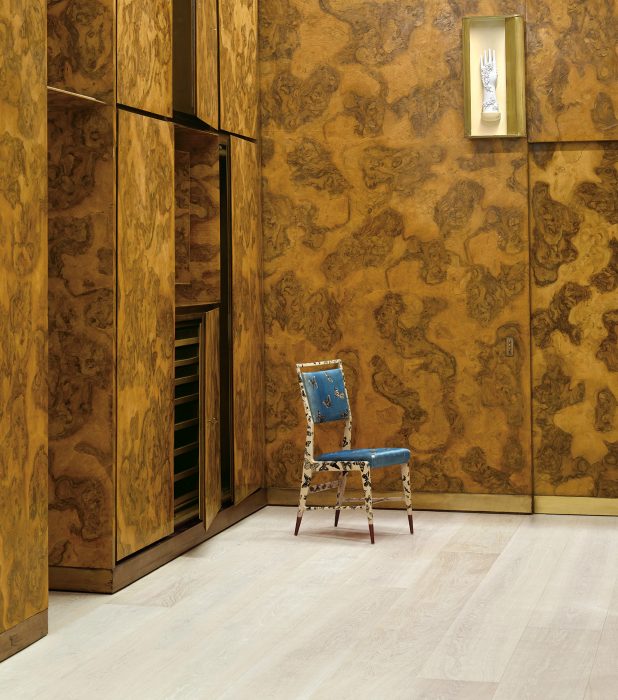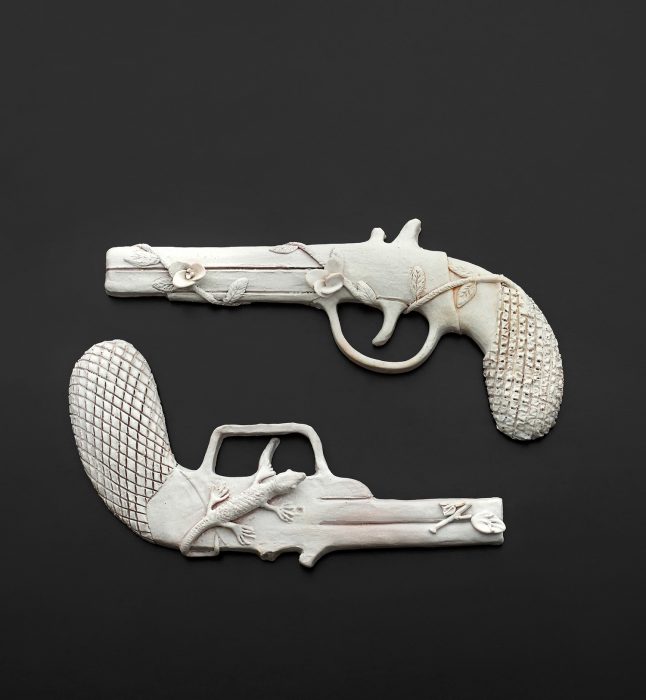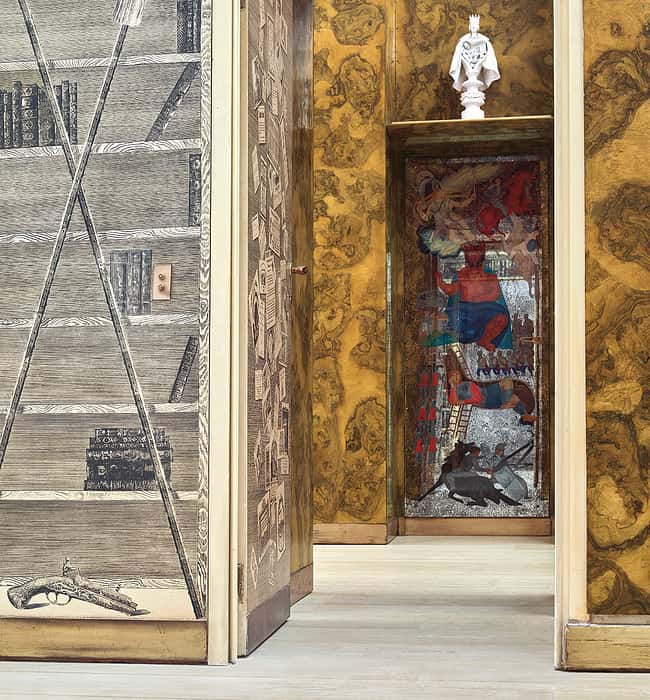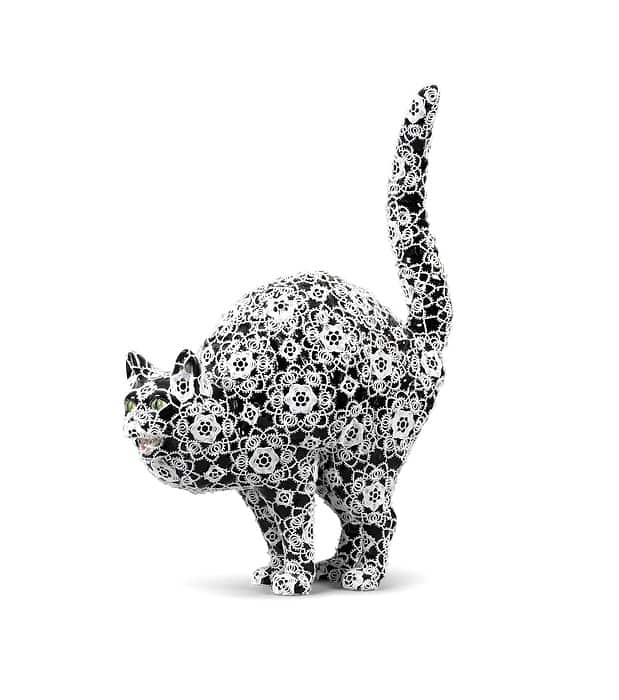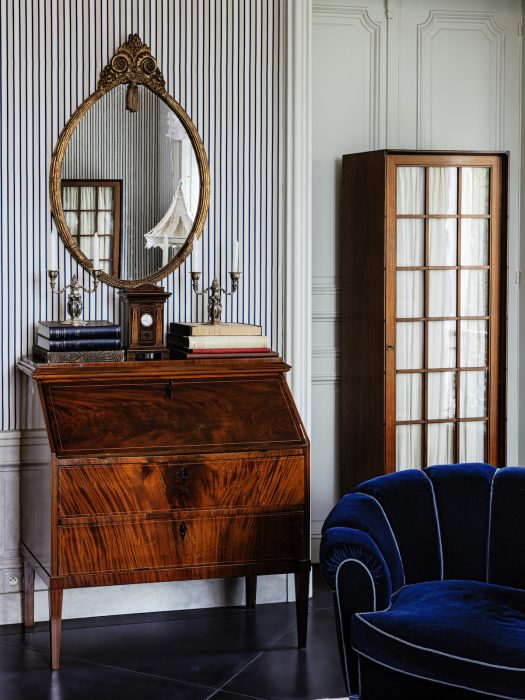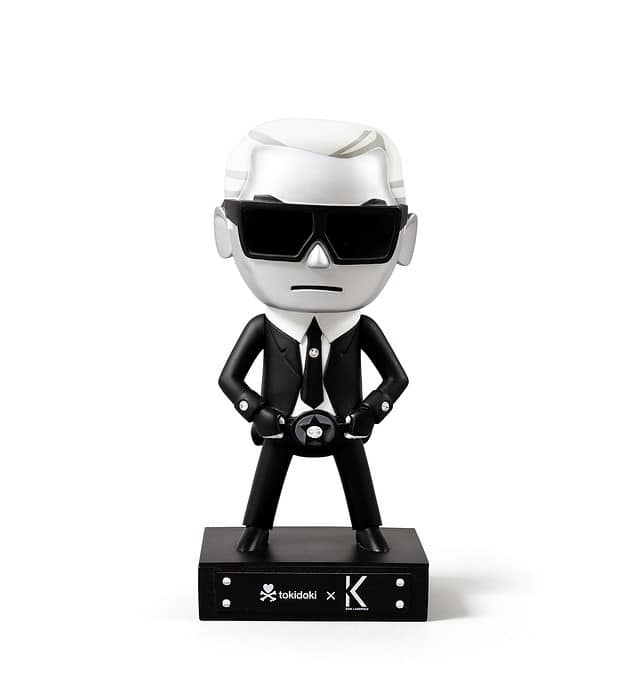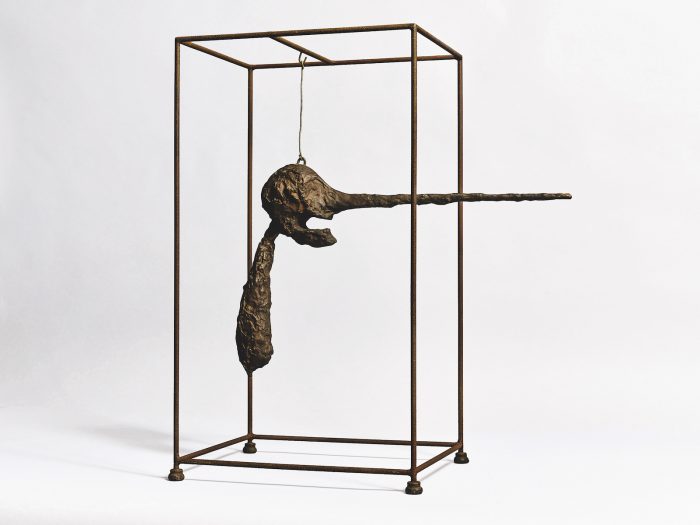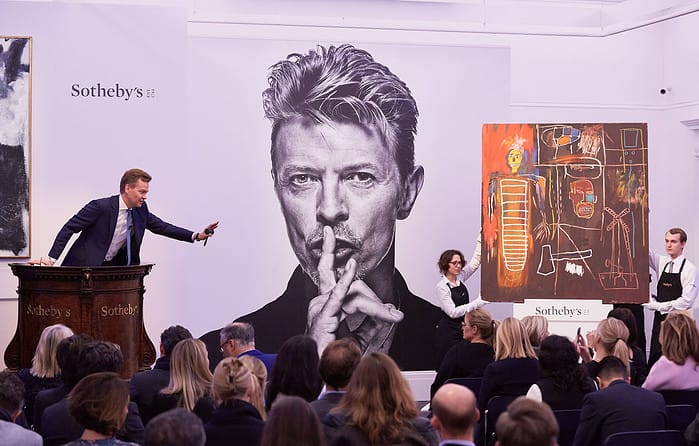Stardust.
Iconic collections going under the hammer have long drawn a crowd.
In 1795, fledgling auction house Christie’s sold the jewels of Madame du Barry, the infamous and recently beheaded mistress of Louis XV, realising a then-whopping £8,791. A few decades later, when Sotheby’s held the sale of Napoleon’s library—the books the emperor took with him into exile on St. Helena—interest was also huge. The ever-growing devotion to the cult of celebrity has done nothing to quash the enthusiasm for objects with big-name provenance in recent years, a matter of almost spiritual devotion for some.
I first paid attention to the goods and chattels of the illustrious departed when I was living in Spain in 1997 and my partner, who worked at Sotheby’s in London, was sent the catalogue accompanying the Duke and Duchess of Windsor sale at Sotheby’s New York. It was of particular interest as Maison Jansen, the firm that had decorated his family’s homes in Madrid and Mallorca, had also outfitted the Windsor’s home in Paris. Jansen’s signature wares of the Ancient Régime were interspersed with princely silver, pug cushions, the duke’s kilts and the duchess’s costume jewellery, her serious gems having already sold at Sotheby’s Geneva in 1987 for a record breaking $50.3 million.
At around the same time, I was given a couple of old auction catalogues, further fuelling my interest in single-owner sales. One was Sotheby’s The Greta Garbo Collection (1990); the other was Christie’s Magnificent French Furniture, Silver and Works of Art from the Collection of M. Hubert de Givenchy (1993). The Garbo catalogue presented the contents of her seven-room apartment overlooking the East River in New York, interesting but bourgeois. Magical, though, were five or six tightly cropped images of the interior itself, affording a brief, through-the-keyhole view into the inner sanctum of the world’s most notorious recluse.
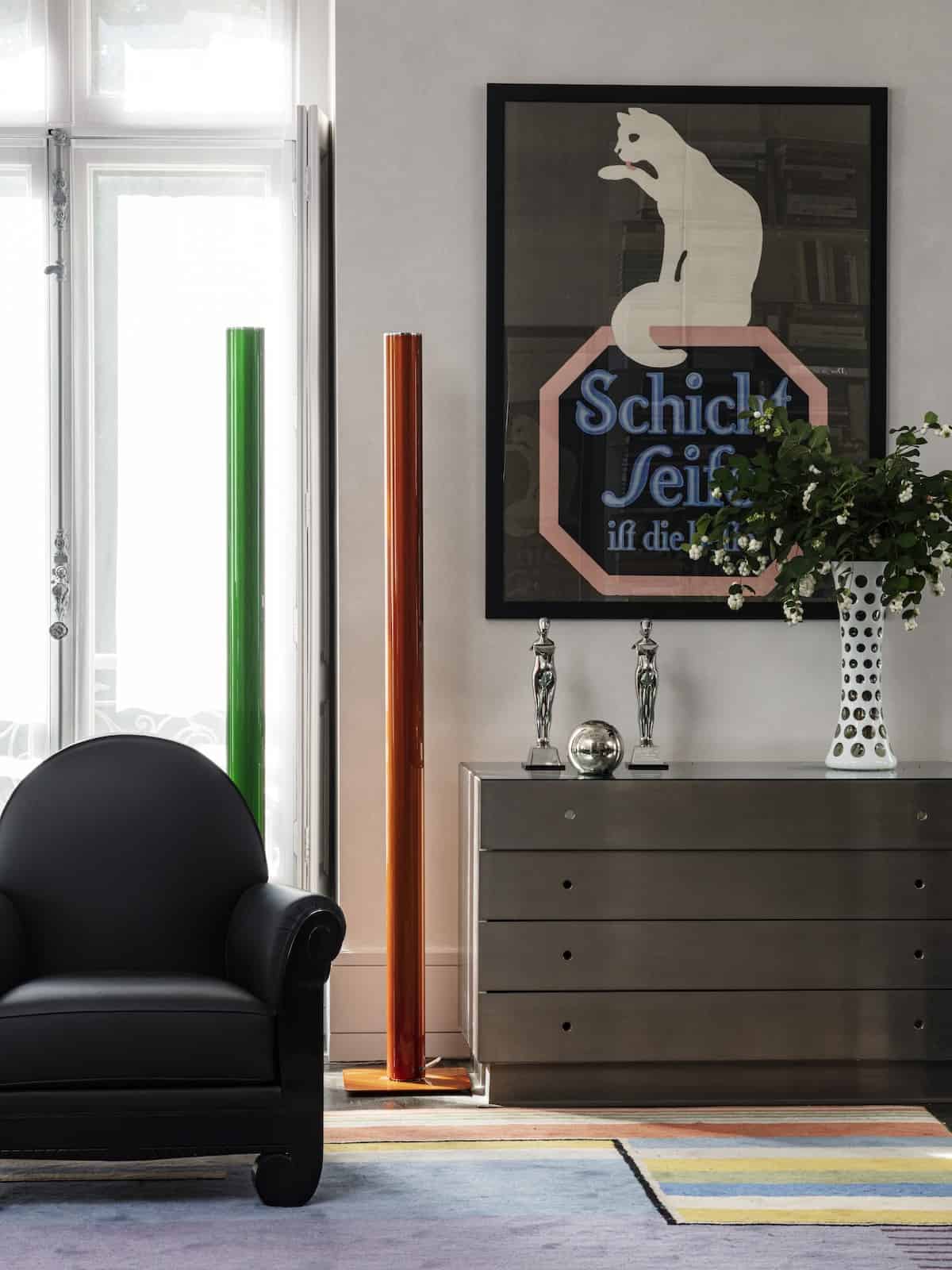
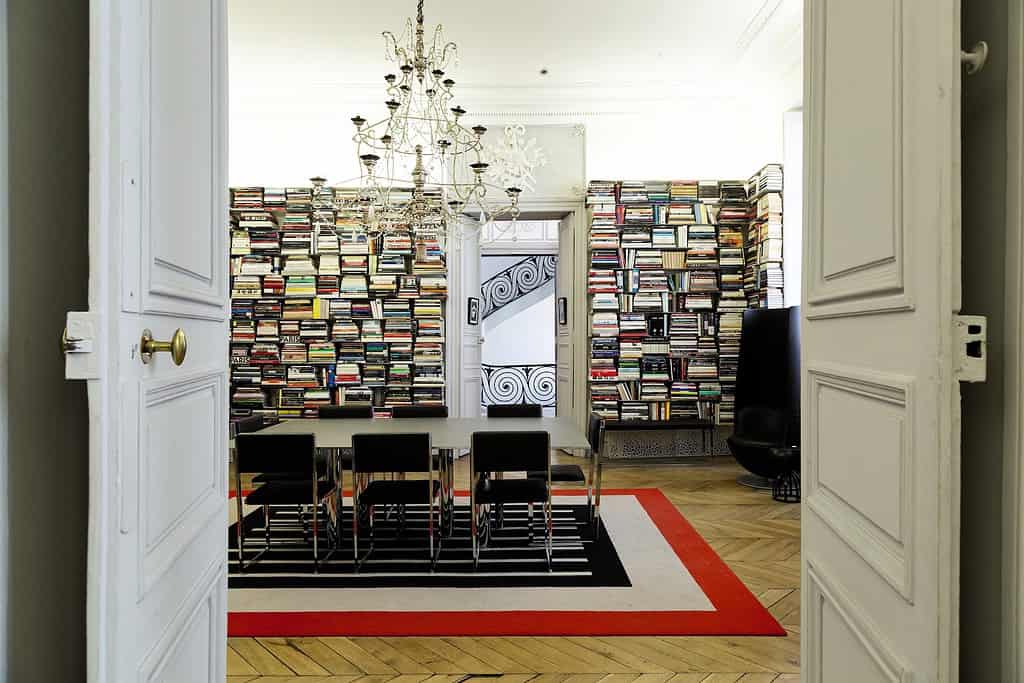
Givenchy’s collection was an altogether different beast. While Garbo had some great paintings—a Bonnard, several Renoirs and the “Garbo Jawlenskys”—the couturier’s collection was so unbelievably chic it almost made Edward and Wallis look middle class. Ninety-five lots included a pair of Louis XV porphyry vases seized by the Republic during the French Revolution, a Régence gilt-bronze mirror attributed to Charles Cressent and a spectacular ebony, brass and tortoiseshell bureau plat by André-Charles Boulle. Each was a masterwork, building crescendo-like to the Hanover Chandelier—52kg of silver—designed by William Kent for George II in the 1730’s.
Arriving in New York a couple of years later, I found midtown ablaze with banners announcing the Christie’s sale, The Personal Property of Marilyn Monroe. I bought the enormous, hardbound catalogue, an entirely different speed again but talk about iconic. Offerings included her library (Monroe was well read) and hand-annotated scripts, rhinestone-encrusted Ferragamos, a monogrammed red leather writing case from Smythson and her yellow Le Creuset. (Estimated at $600-800, the saucepans sold for $25,300.) There was also jewellery, her enormous collection of Pucci—what she wore when she was Norma Jean—and the famous frocks—for when she was being Marilyn— including the “Happy Birthday Mr President” dress donned for JFK that sold for a record-breaking $1.267 million.
(The star power of the Kennedy name was of course already well established in the auction stratosphere. When Sotheby’s held the sale of the Estate of Jacqueline Kennedy Onassis in 1996, JFK’s rocking chair (estimate $3,000-5,000) sold for $453,000; and the Louis XVI bureau plat ($20,000-30,000) at which the president signed the 1953 Nuclear Test Ban Treaty, sold for $1.4 million. The desk was not the only piece of French 18th-century in the collection: Jansen had also decorated the White House for the Kennedys.)
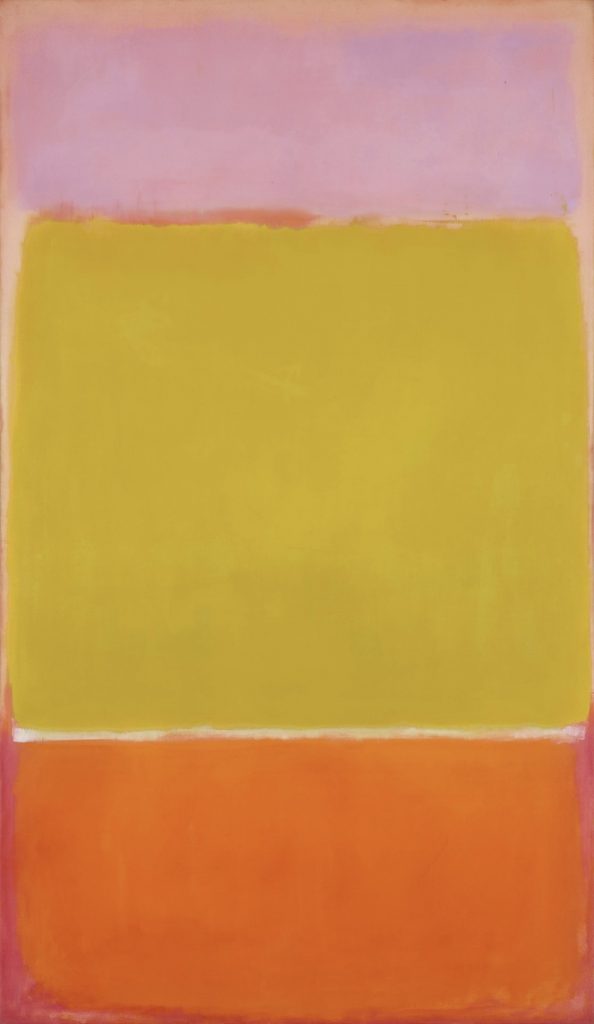
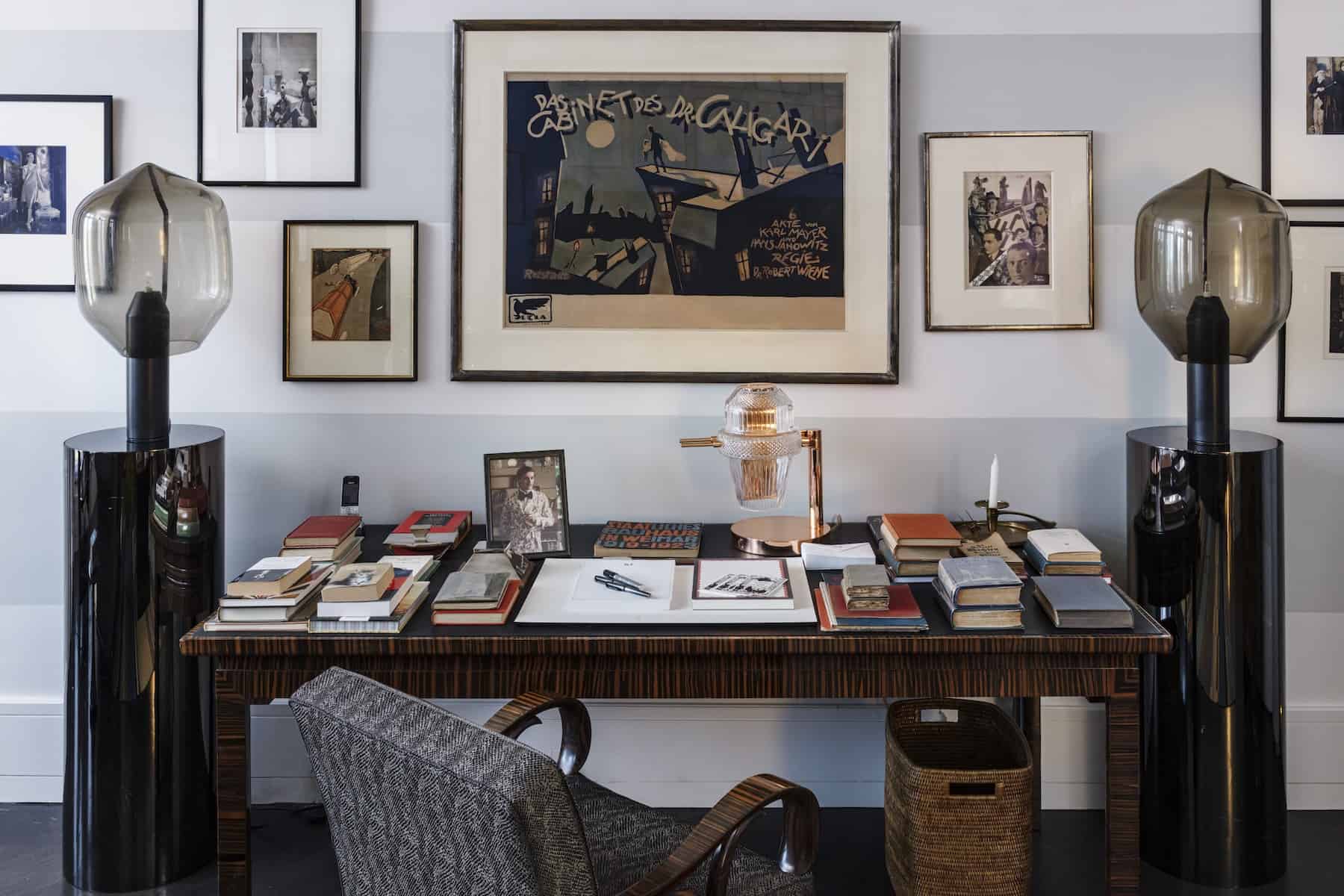
Iconic collection sales often realise many times their pre-sale estimates, not to mention ‘white glove’ status, the holy grail of the auction world when 100% of lots are sold. But they also afford another opportunity: they are the ultimate self-portrait, providing the narrative of great lives as told through art, objects and ephemera.
“The sales that symbolise moments in someone’s career or private life have a bit of stardust – they are biographical and represent the life in full colour,” David Macdonald, the head of Single-Owner Sales at Sotheby’s in London, tells WISH. “Sales from the estates of diverse individuals like David Bowie, Vivien Leigh, Gianni Versace and Lady Mountbatten have all been deeply personal. Items on offer reflect some essence of their previous owner and can be a very real link. They can be unique and feature important works of art in their own right, such as the Tinteretto from David Bowie’s collection, but they can also be ordinary: Andy Warhol’s cookie jar, Winston Churchill’s briefcase, JFK’s rocking chair. During the Windsor sale and Jackie Kennedy sale, people lined around the entire block of our building to view. When we sold the Duchess of Windsor’s jewels, the sense of occasion was paramount. Models wearing Givenchy held her jewels and staff wore black tie.”
Joining this pantheon of stellar single-owner sales is the estate of Karl Lagerfeld, being presented by Sotheby’s in Monaco and Paris this month and continuing in Cologne in the spring of 2022. More than 1000 lots have been gleaned from five Lagerfeld residences: three flats in Paris; a house in Louveciennes once home to the poet, Leconte de Lisle; and an apartment in Monte Carlo. Featuring early 20th century German posters, works by Jeff Koons and Takashi Murakami, and the feeding dishes of his beloved cat, Choupette (rumoured at one point to be his heir), the assemblage feels playful and modern although as Pierre Mothes, vice-president of Sotheby’s France, explains, the couturier had already sold large parts of his collection. “Karl Lagerfeld started collecting Art Deco in the early 1970’s and organised an auction at Drouot in 1975, just three years after the famous Jacques Doucet sale,” says Mothes.
This need to disperse over the years makes sense: Lagerfeld amassed houses as though they were fingerless gloves, hundreds of pairs of which are included in the sale. As Mothes recalls: “I will always remember Lagerfeld’s motto at the time: ‘I am not prepared to become the curator of my own collection.’” He was at different times the custodian of various châteaux, hôtels particuliers, an apartment in New York and Baronial villas in Hamburg and Biarritz. Two residences were designed by Andrée Putman: an apartment in Rome, an ode to the Wiener Werkstätte; and a “palace for a child” in Monte Carlo, its Memphis-filled contents sold by Sotheby’s in 1991.
A candlelight-dappled Lagerfeld so successfully lived out his 18th century fantasies in a Paris hôtel particulier that fashion journalist André Leon Talley reported, “the whole place (and Lagerfeld’s mental condition) might best be described as a Versailles complex.” This fetish for Sun King style, though, was not to last. In 1997, Mothes was tasked with valuing Lagerfeld’s entire 18th century collection, which was sold a few years later. “He then consigned at Sotheby’s his second Art Deco collection in 2003, including major works by Eileen Gray, Marcel Coard, Jean-Michel Frank and Pierre Legrain.”
Striking within this year’s sale is his penchant for futuristic design. Hailing from his spaceship-like apartment on the Quai Voltaire, highlights include a round stainless steel cocktail table by Maria Pergay (1968), with an estimate of €8,000-12,000, and Mark Newson’s fabulous Zenith Chair (2003) in highly polished aluminium, estimated at €40,000-60,000. Other contemporary design includes works by Martin Szekely, such as Console Prototype 2 (2005) estimated at €10,000-15,000.
Ever present is Art Deco, including sleek and luxurious furniture by Louis Süe and André Mare, as well as pieces by fellow German Bruno Paul, such as a chest of drawers in yellow-painted wood estimated at €800-1200 that will undoubtedly sell for much more. “The estimates are only indicative: it is impossible to anticipate the Karl Lagerfeld effect on the auction,” says Mothes. “The collection reveals his taste as a decorator, aesthete, designer and humanist but it is also so much more, revealing the man he really was. Karl had always maintained his taste for all the main aesthetic movements of the 20th century, especially Art Deco, but as someone who consistently looked to the future, he was fascinated most by the designers, who, like him, were pioneers in their field.”
One of the most important collections to be sold at auction—and certainly the most sublime—was the one assembled by fellow couturier, Yves Saint Laurent and his partner Pierre Bergé. Like Lagerfeld, they were also pioneer collectors of Art Deco and maintained multiple homes—four in Paris and one in Deauville, Tangier and Marrakech. Unlike Lagerfeld they held onto them. When Saint Laurent died in 2008 and Bergé consigned their collection to Christie’s, not a single work up to that point had been sold. The sale realised €374 million, a new world record for a private collection sold at auction, with proceeds going to AIDS research and the couple’s charitable foundation, established to preserve the couturier’s work.
“The variety of first-class objects, the quality of paintings and objet d’art left no doubt that this collection would attract international attention,” says Lionel Gosset, Director of Collections at Christie’s Paris. “The timing, just after the banking crisis, made us a bit nervous but as soon as the catalogue went out to prominent collectors and their positive interest was received, we knew it would be a success.”
In the late 1950’s, Saint Laurent and Bergé were mesmerised by the Paris home of Marie-Laure and Charles de Noailles—namely the juxtaposition of countless old and modern masters against a minimalist, parchment-clad interior designed by Jean-Michel Frank in 1926. Intent on one day recreating its irreverent spirit, the chance came in 1970 when they bought their now fabled duplex on rue de Babylone. The collection grew to contain two millennia of art history and morphed into a work of art in its own right, in what was half museum, half refuge for a troubled artist whose only consolation was beauty. (According to one Paris dealer, Saint Laurent broke down in tears upon discovering a statue he wanted had been sold.) “Passion, desire, collecting the best pieces in each field and presenting them in a unique and personal way reflected Saint Laurent’s greatness as a designer and Bergé’s eye as a collector,” says Gosset.
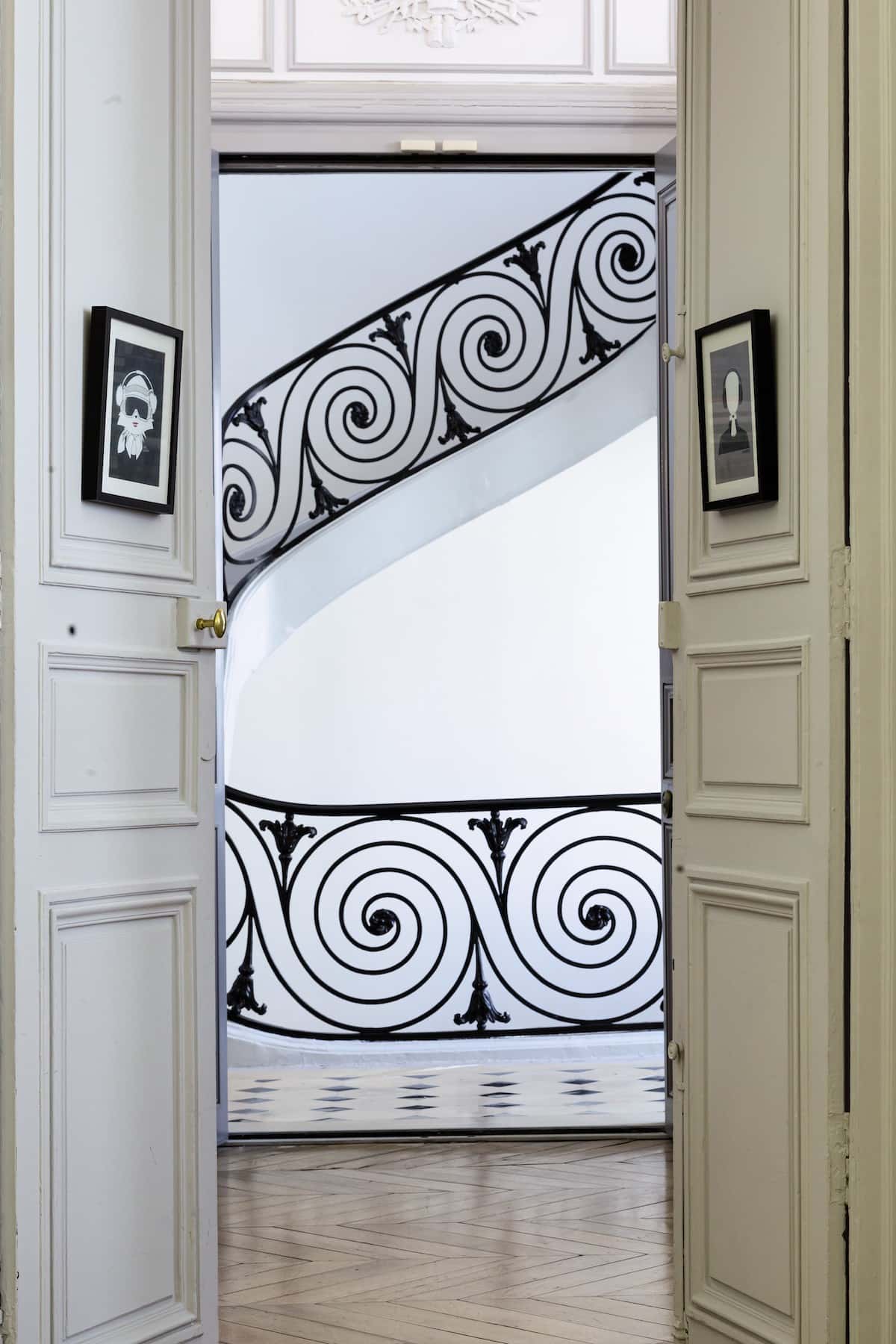

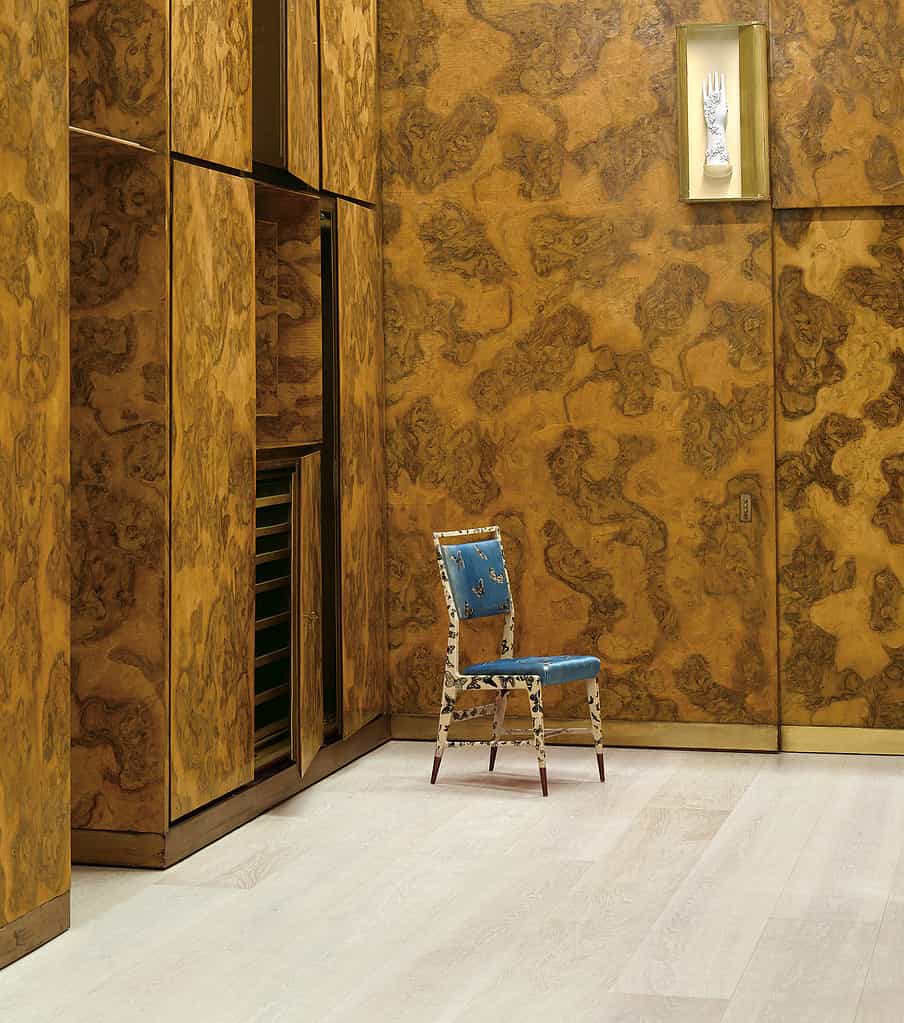
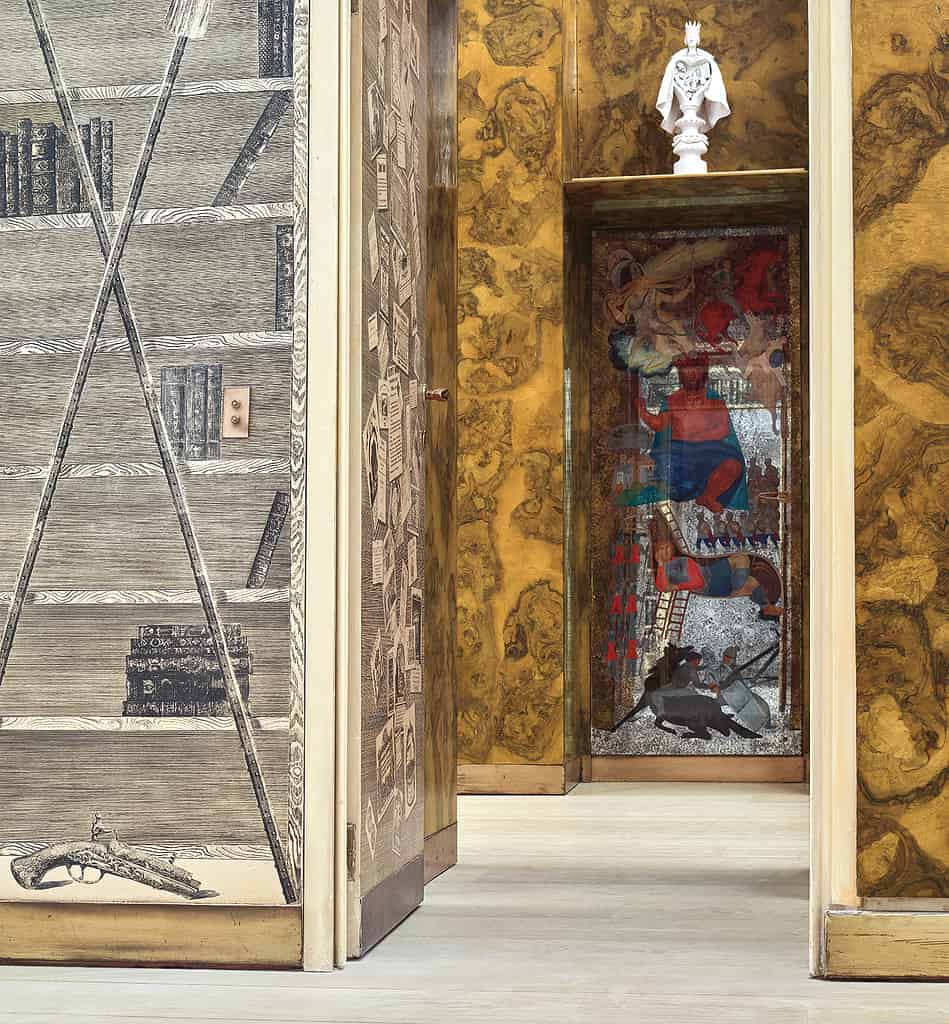
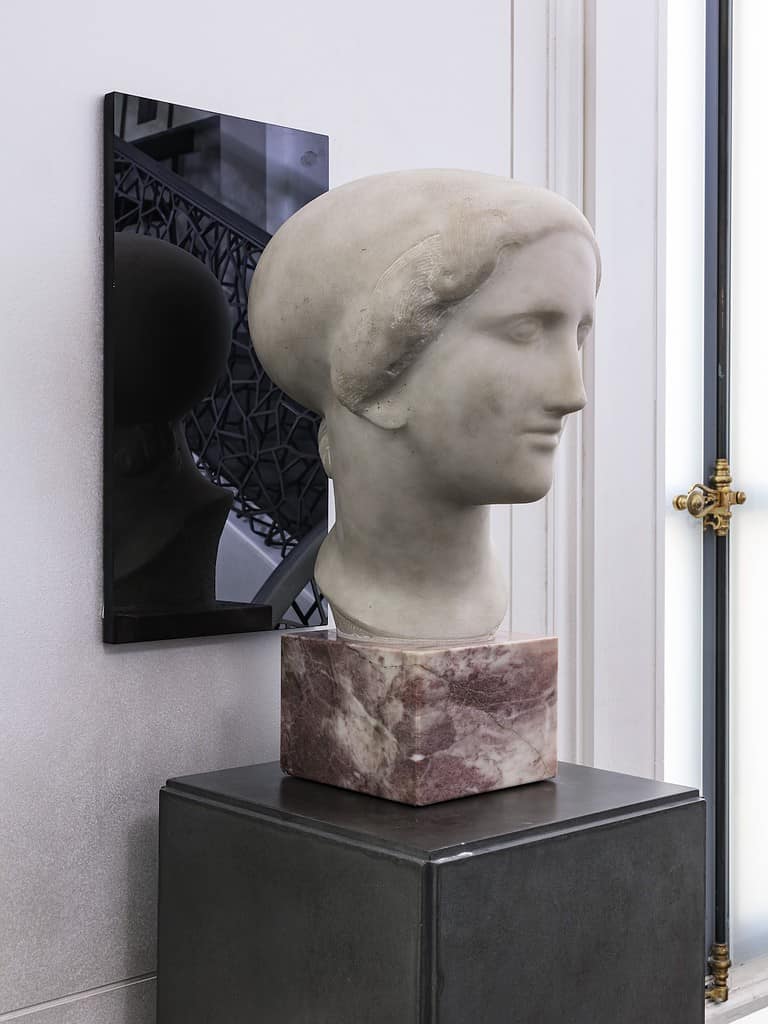
A magnificent Roman torso from the 1st century CE stood sentry in the entrance hall, while a suite of 15 mirrors that took Claude Lalanne 11 years to complete lined the walls of the music room. In the library, the YSL Bar (1965) crafted by Claude’s husband, François-Xavier Lalanne, stood behind a white-slipcovered sofa that seemed to be, from 70’s photos, Betty Catroux’s favourite place of recline. The serious stuff, however, was to be found in the drawing room, with its “throng of masterpieces” by Léger, De Chirico, Vuillard, Klee, Goya, Dunand, and Legrain. A single Dragon armchair (1917-1919) by Eileen Gray realised €21,905,000, while a Brancusi that had once belonged to Léger sold for €29,185,000. Saint Laurent’s favourite picture, The Cowslips, Blue and Rose Fabric (1911) by Henri Matisse sold for €35,905,000. The Goya now resides in the Louvre and the de Chirico in the Centre Georges Pompidou, while a wonderful tapestry from the library is at the Musée d’Orsay. Bergé kept just one item from the collection: a Senufo bird carving from the Ivory Coast, the first piece he and Saint Laurent bought together in 1960.
Across the pond, Christie’s presented the Collection of Peggy and David Rockefeller in a series of sales in May 2018. Collection highlights toured Hong Kong, London and Los Angeles prior to the monumental sale at Christie’s New York. It achieved a whopping $835,111,334—nearly double that of Saint Laurent-Bergé—with the proceeds going to a dozen philanthropies the Rockefellers supported during their lifetimes. Diego Rivera’s The Rivals (1931) set a new record for Latin American art when it sold for $9,762,500 although Picasso’s Filette à la corbeille fleurie (1905) achieved the top price of $115,000,000. A Monet and a Matisse were next, each achieving in excess of $80 million. (The Sèvres ‘Marly Rouge’ service that Napoleon commissioned in 1814, just in time for his first exile on Elba, sold for $1,812,500—the world auction record for 19th century porcelain.) The Rockefeller sale shattered twenty-two records across fields including Impressionist and Modern Art, American painting, contemporary sculpture and decorative art.
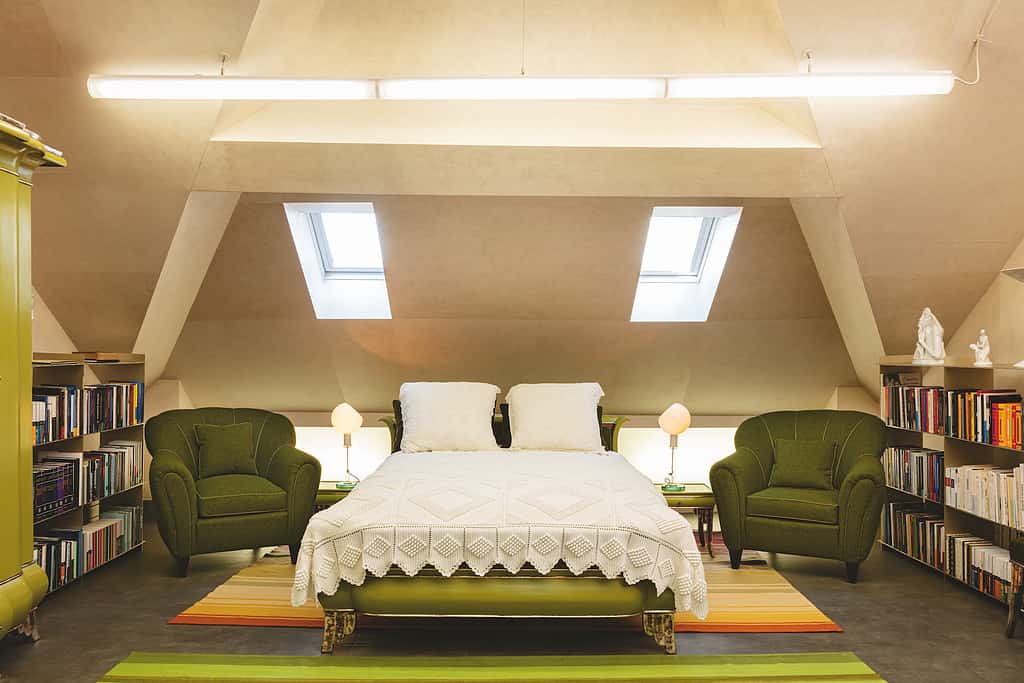
The magic of these sales is not limited to those reaching toward the billion-dollar mark. A collection I enjoyed discovering recently was that of the French artist Pierre-Le Tan, who once proclaimed: “A shrewd collector always purchases against the trend.” Famous for illustrating many covers of the New Yorker, Le-Tan more or less devoted his life to drawing and collecting, with antiquities and other pieces from his collection even appearing in his art. Following his death in 2019, Sotheby’s Paris recreated his wunderkammer of an apartment at their galleries on rue de Faubourg Saint-Honoré, giving context to the collection. Its curator was a bibliophile, like Bergé; a talented artist like Saint Laurent; and collected things that weren’t especially fashionable, a little like Garbo and her Jawlenskys.
Nor is the presentation of great collections limited to Christie’s and Sotheby’s. Phillips describes itself as “the world’s most dynamic and forward-thinking auction house”, a benchmark it certainly lived up to with the 2019 ‘Casa di Fantasia’ sale, held in association with Italian auction house, Cambi. The collection comprised just 30 lots from Casa Lucano, a Milan apartment designed by Gio Ponti in 1951 that echoed both Italian Metaphysical and French Surrealist art of the early and mid-twentieth century. Ponti collaborated with Edina Altara, Piero Fornasetti, Fausto Melotti and Giordano Chiesa, who, amongst others, worked under his guidance to craft individual pieces as well as whole rooms.
I reached out to an old friend at Phillips, Domenico Raimondo, Head of Design for Europe, wanting to know more. “The rooms (lot 310) were extraordinary,” says Raimondo. “The enfilade and vistas were like a theatre set, where the inhabitants were free to roam amongst all those layers of references and metaphysical surfaces, like characters in the Luigo Pirandello play, Sei personaaggi in cerca d’autore.” Stars of the ‘white glove’ sale were two chests of drawers by Ponti and Altara, their mirrored fronts hand-painted with mythological scenes. With estimates of £45,000-65,000, they sold for £250,000 and £337,500 respectively. A Ponti brass wall light, meanwhile, containing a ceramic hand by Richard Ginori was estimated at £10,000-15,000 and sold for £110,000. Raimondo singles out a pair of pistol-form sculptures as a favourite. “They had all the humour and surrealist quality of Ponti’s work from that period.”
The international auction market is only slowly emerging from the pandemic (global revenue from the sale of fine and decorative art and antiques was down by 30% in 2020), but with the recent sale of The Macklowe Collection at Sotheby’s New York, things are looking up. The court-ordered auction follows the acrimonious separation of two of the world’s great art collectors, the real estate tycoon Harry Macklowe and his ex-wife, Linda. (Linda is credited as the lead architect of the collection.) Thirty-five lots of post-war and contemporary masterpieces, amassed by the couple over five decades, toured the globe before returning to New York where they sold for $676 million—the most valuable single owner auction ever staged and the most valuable sale in the history of Sotheby’s. What’s also extraordinary is this was only part one. A further 30 works from the collection will be sold in May 2022.
Sotheby’s chairman Brooke Lampley describes The Macklowe Collection as “a compendium of masterpieces like no other.” The star of the night was Rothko’s No. 7 (1951), a monumental, 2.4 metre tall canvas featuring horizontal bands of pink, yellow and orange work in bands that sold for $82.5 million. Le Nez (1947), a sculpture by Alberto Giacometti sold for $78.4 million. With an estimate of $25-35 million, Jackson Pollock’s Number 17 (1951) set a new record for the artist when it sold for $61 million. After the sale, auctioneer Oliver Barker described the ‘white glove’ event as a once-in-a-lifetime experience. “Tonight was the kind of sale auctioneers dream about.”
Photography ℅ Christie’s, Sotheby’s and Phillips.
From a story originally published in WISH.

